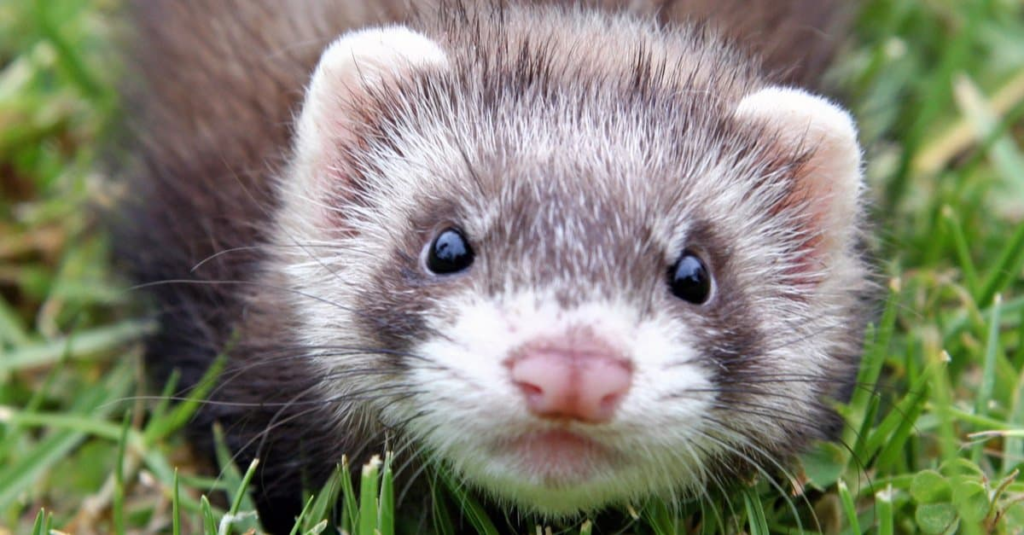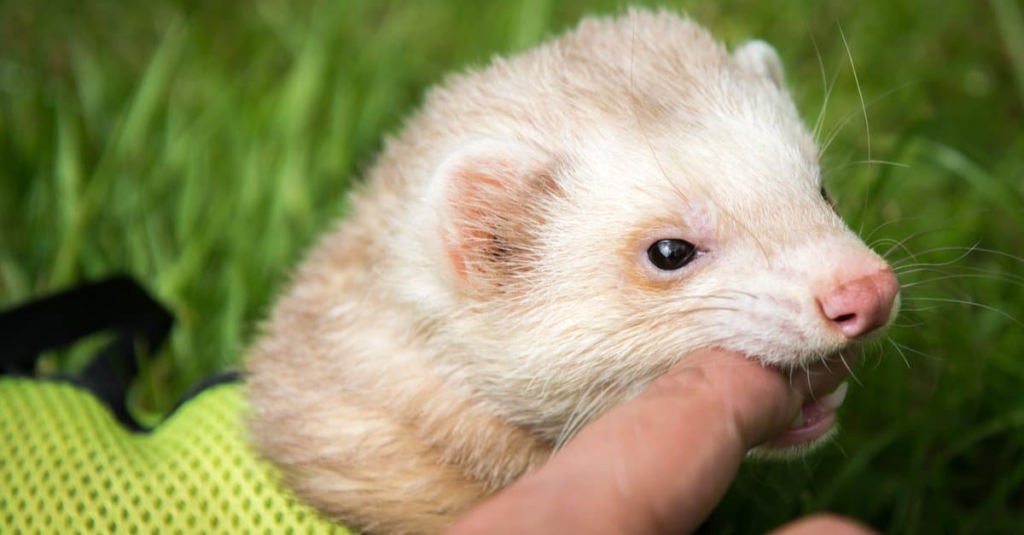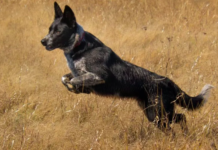Last Updated on November 17, 2023 by Fumipets
Pet ferrets come in a wide range of variations, although they are all of the same breed, Mustela putorius furo. However, there is a lot of diversity in the color and pattern of each ferret’s coat, giving the impression that there are several types of ferrets.
If you are attempting to determine what color your ferret is, you will first need to determine the color of their coat, and then you will need to examine the pattern that they have over this particular color of their coat.
The eight colors that may be found in domestic ferrets are listed by the American Ferret Association. What colour of ferret is the rarest? Let’s look at it!
The 17 Types of Ferrets
1. Sable Ferrets

In domestic ferrets, this is one of the ferret color patterns that is most often seen. Upper guard hairs on ferrets with sable coats will have a rich, warm brown hue. For displaying ferrets, their undercoat will be lighter, with shades of white and cream being favoured, however you may also find light golden undercoats. They will have brown eyes that are almost black. The nose of a sable ferret will be light brown, brown with speckles, or brown with a brown “T” shape outline.
2. Black Sable Ferrets
Black sable ferrets have an undercoat of white or cream with guard hairs that range from black to dark brown. The hue of this coat shouldn’t have any warm undertones. The eyes and noses of black sable ferrets should be either black or extremely dark brown, while a speckled black nose is also acceptable.
3. Chocolate Ferrets

Guard hairs of chocolate ferrets have a warm milk chocolate brown color. Their undercoat may be white with hints of golden color. Brown or dark burgundy eyes and pink, brown, beige, or brick-red noses are characteristics of chocolate ferrets. A light brown T outline may also be seen with the pink nose tint.
4. Champagne Ferrets
The diluted variant of a chocolate coat color is champagne. Their undercoat will be white or cream, with guard hairs that are a light warm brown. Either mild or dark burgundy tones are suitable for their eyes. The nose of a champagne ferret might be pink, beige, or pink with a light brown or beige T outline.
5. Cinnamon Ferrets

Do you want to know what ferret color is the rarest? That’s it! Cinnamon has a peculiar hue that is sometimes mistaken for champagne. You can tell the two apart after you take a closer look at their sort of ferret! A cinnamon ferret has guard hairs that are a deep light brown with a crimson undertone. When they are sitting in the sunlight, this is quite visible. They should have golden to white undercoats. They will have burgundy eyes that may be bright or dark, much as their coat is champagne in color. Their nose should be brick red, however beige or pink with a T outline in brick or light brown is also acceptable. Their lips should likewise be brick red. A pink nose is sometimes seen in cinnamon ferrets, although it is not the chosen hue for exhibiting.
6. Black Ferrets
Guard hairs on black ferrets will be a genuine black hue. They have white or golden undercoats. They have black noses and eyes that are dark brown or almost black. There may be spots on their noses sometimes.
7. Albino Ferrets

Albino ferrets are unique because they lack any pigment or pattern, making them a unique breed. Their undercoat and guard hairs will both be white or a light cream in color. Ferrets with albinism have pink noses and ruby-red eyes.
8. White Ferrets
To differentiate it from ferrets that are albino, this hue is sometimes referred to as a dark-eyed white pattern. White to cream will be the color of their guard hairs and undercoat, while white is recommended for exhibiting. The eyes and nose of a white ferret with dark eyes are burgundy.
Types of Ferret Patterns
Now that we are aware of the eight colors that domestic ferrets may be found in, let’s look at the patterns that these colors include!
9. Standard Pattern
90% to 100% of the guard hairs on a ferret with a typical pattern are pigmented, with the rest white. They will have a fill or T mask over their faces, and their bodies will be lighter in color than their points.
10. Roan Pattern

The guard hairs of roan-patterned ferrets range in color from 50% to 60%, with the remaining white. Depending on their hue, they may have various masks.
11. Point Pattern
Point ferrets, sometimes referred to as the Siamese pattern, will have a clear color distinction between their body color and the color of their points. The color of this breed of ferret will determine the mask design. For black, sable, black sable, cinnamon, and chocolate ferrets, a V mask is suitable. Champagnes might have a V-shaped mask or none at all. Ferrets with the point pattern are not permitted to wear the T pattern or a complete mask.
12. Solid Pattern
All guard hairs on a ferret with a solid pattern should be dyed. From head to tail, a ferret with a solid pattern should have the same color concentration.
13. Mitt Pattern
White mittens will be seen on each of the four feet of ferrets with a mitted design. They may also have a white tail tip, bib, and knee patches.
14. Blaze Pattern

A long, white blaze that begins on the forehead, extends between the ears, and ends at the shoulders may be seen on ferrets with the blaze pattern. Their mask may be different, but it should never cover their whole face in color. It’s possible to observe colored rings around their eyes. They might have either white tips or white mittens on their front and rear feet (smaller than mitts). Additionally, they could have white tail tips and knee patches. A white bib, spots, or roaning are all appropriate patterns to have across their stomachs.
15. Panda Pattern
A panda-patterned ferret should have an almost all white head, including the neck and throat. Over their eyes, they may have colored guard hairs that create shaded rings. Four white gloves, as well as possible white knee patches and tail tips, are required for ferrets with a panda design.
16. Striped Pattern

This particular ferret pattern appears as a band of darker guard hairs along the length of a white coat. Typically brown in color, the stripe runs the length of the ferret’s back. Although the American Ferret Association does not recognize this pattern, certain domestic ferrets may exhibit it.
17. Mutt Pattern
Any ferret with a coat color and pattern that doesn’t cleanly fit into one of the aforementioned categories is often referred to as having this pattern, which is also not approved by the American Ferret Association. On a single ferret, you could notice roaning, spots, varied coat colors, and other patterns.
https://www.youtube.com/watch?v=vf1qobh2qpg
Conclusion
Given that ferrets may change color as they shed their coats, it might be challenging to identify the color and pattern of your pet.
In addition, older ferrets will begin to develop more white guard hairs, making it difficult to determine their real color if you acquired them at an advanced age.


















